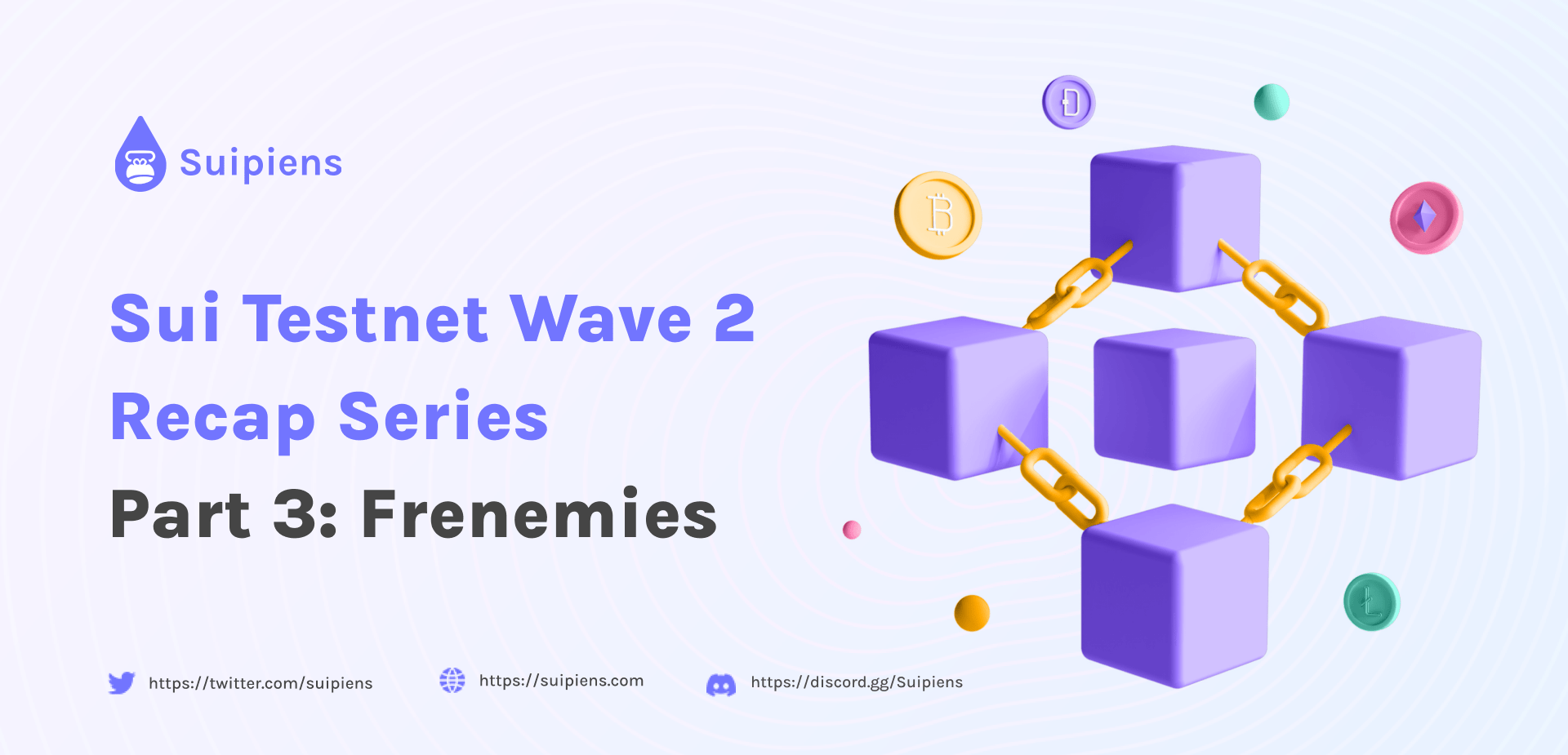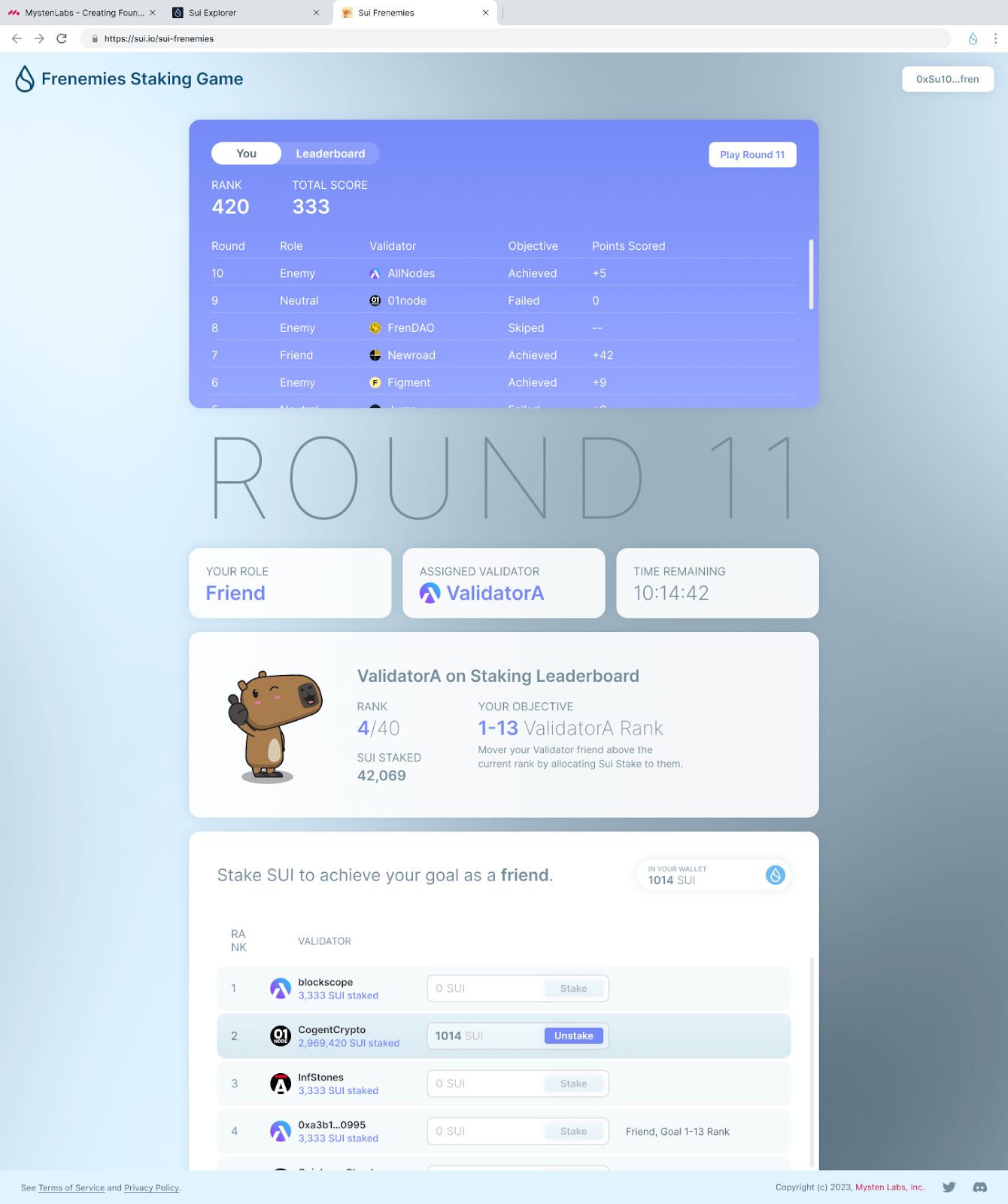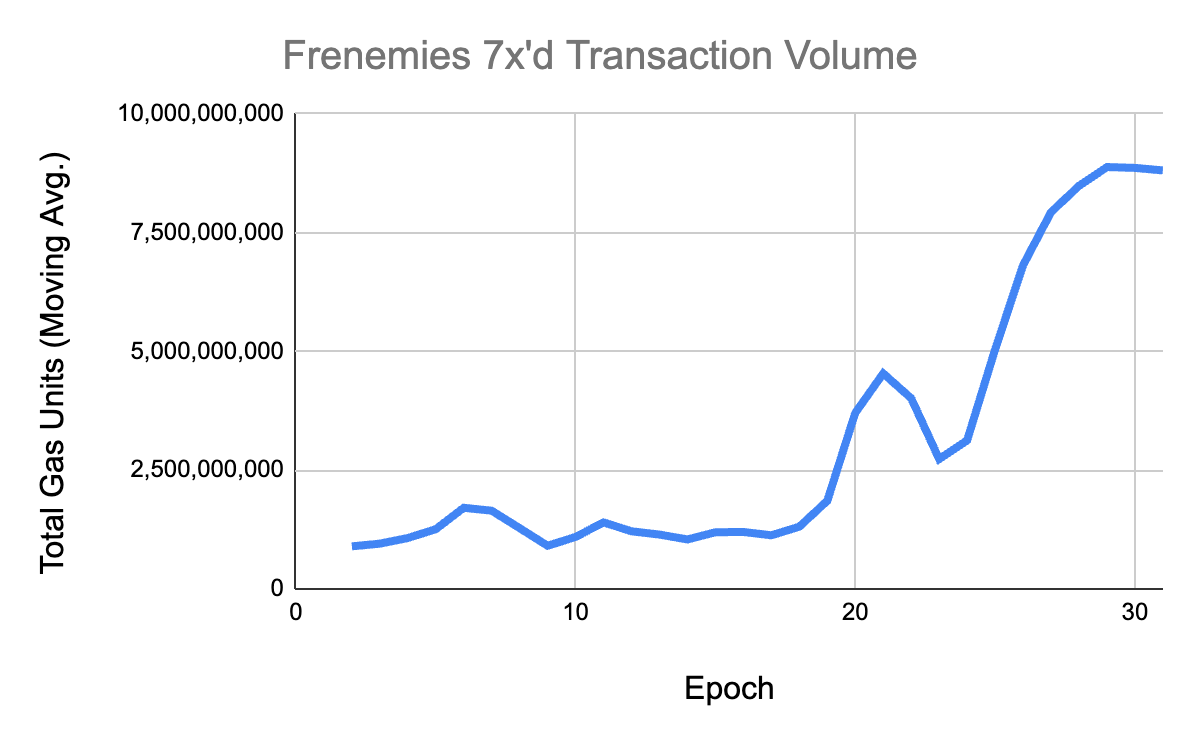Sui Testnet Wave 2 Recap (Part 3)

Welcome to Sui Testnet Wave 2 recap! This will be a 3-part series. Let's move on to final part - The Frenemies.
Introduction
As we move closer to launching Sui's mainnet, it's essential to ensure that our network is capable of scaling to meet the needs of our growing community. To that end, Sui recently launched Frenemies, a game designed to test and improve our staking functionality while also providing a fun and engaging experience for players. In this article, we'll take a closer look at Frenemies, its architecture, gameplay mechanics, and the valuable insights we gained from the game.
Frenemies Architecture

Frenemies, a game designed by Sui, showcased its strengths by attracting over 700,000 players who staked with 41 validators and strategized to improve their scores. The game comprised two primary components: smart contracts and a web app.
The smart contract component was responsible for executing staking commands on the network and keeping track of players' scores and leaderboard status. On the other hand, the web app provided players with an interface to interact with the smart contracts, without requiring in-depth technical knowledge. We aimed to strike a balance between ease-of-use and information density while building the app, ensuring that players could learn the game quickly and have fun playing it. Subsequent iterations of the app included features such as validator logos and real-time display of validators' stakes.
During the game's runtime, we identified a few areas for improvement at the smart contract level. Specifically, the scorecard was not performing up to expectations and required optimization. Additionally, we shifted Frenemies to a Full node to ensure that it could handle the high traffic volume.
Gameplay Choices
The concept of Frenemies started off as a straightforward plan to incorporate a game-like element into staking. However, as Sui delved deeper into the idea, maintaining a fair balance in the game became a significant issue. It had to carefully consider various game mechanics, including player objectives and tasks. While the primary purpose of the game was to test staking on the Sui network, Sui also aimed to make it enjoyable and engaging for the players.
The Three Objectives
In the game Frenemies, players are given one of three roles: Friend, Neutral, or Enemy. We had discussions about whether three roles were sufficient or too many. To test this, we even created a simulation of the game in a spreadsheet and played several rounds.

Through this process, we discovered that the most interesting moments in the game occur at the boundaries of an epoch and within the validator leaderboard. Game testers quickly realized that the optimal strategy was to obscure or fake their assigned role to prevent other players from gaining information. They often waited until the last moment of a round to make their moves or staked with unrelated or enemy validators to mislead other players. Testers also found that staking their enemy's enemy, another validator on the brink of leaderboard movement, was an effective strategy to achieve their desired outcome.
As the testing continued, we concluded that assigning three roles was the right choice. Having only two roles did not result in enough opportunities for suspenseful moments in the game, while having four roles proved to be too complicated for players to understand.
Random Validator vs. Round Robin Assignment
To achieve success, it was necessary for Frenemies to engage in a considerable amount of staking activity. Meanwhile, during Wave 2, validators were also playing their own game, so it was important to ensure that staking activity was spread evenly among all validators. To achieve this, we implemented a random assignment system that ensured each validator had a portion of Frenemies players operating on them during each epoch.
However, assigning roles presented a more complex challenge. Random assignment was considered but ultimately rejected as the number of Friends, Neutrals, and Enemies might be uneven or all players assigned to a single validator might have a similar role. To ensure a fair balance of staking and unstaking activity and provide each player with an opponent to play against, we opted for a round-robin method of role assignment. This approach also ensured that players could experiment with different strategies as they rotated between being a Friend, Neutral, and Enemy.
Outcome
Sui was pleasantly surprised by the overwhelming response of the community to Frenemies, surpassing even our most ambitious expectations. We had the privilege of welcoming over 700,000 players who had the opportunity to engage in the fundamental activities of operating a Delegated Proof-of-Stake network. Our original goal was to generate a substantial amount of staking activity and assess the performance of validators and the network in response to significant changes in staked SUI. However, this level of community involvement far exceeded our initial goals.
The tremendous community response was not only evident in the number of users but also in on-chain activity. At the launch of Frenemies, there was a significant surge in gas units, which served as a useful proxy for network transactions. The high volume of transactions allowed us to make confident predictions about SUI's performance at scale, and we are pleased with the positive results.

Wrapping up
Frenemies was a resounding success, providing valuable insights into staking functionality while also providing an enjoyable and engaging experience for players. As we move forward towards the launch of Sui's mainnet, we will continue to leverage the insights we gained from Frenemies to ensure that our network is scalable, secure, and stable.
We constantly update Sui Blockchain's information on Suipiens. Also, you may follow communities about Sui Blockchain to swiftly track information if you want to quickly update your knowledge of Sui.

